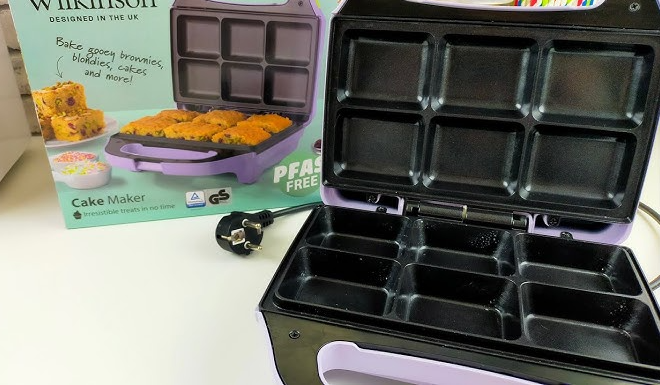Knowing how to clean cake maker plates is essential for maintaining your appliance’s performance and ensuring your cakes are safe and delicious. In 2025, cake makers feature advanced non-stick coatings, eco-friendly materials, and smart technology, making proper cleaning critical to preserve these innovations. Clean plates prevent flavor contamination, extend the lifespan of your cake maker, and support sustainable baking practices. This guide covers everything you need to know about how to clean cake maker plates, including setup, usage tips, troubleshooting, maintenance, and safety. Let’s keep your cake maker spotless and ready for baking!
Why Cleaning Cake Maker Plates Matters
Properly cleaning your cake maker plates ensures hygiene, maintains non-stick performance, and supports eco-friendly baking. Dirty plates can lead to sticking, uneven baking, or flavor transfer, while improper cleaning can damage advanced coatings found in 2025 models. Regular cake maker cleaning also aligns with sustainable practices by extending appliance life and reducing waste. For more insights on maintaining your cake maker, check out this baking guide.
Preparing to Clean Cake Maker Plates
Before diving into how to clean cake maker plates, a proper cake maker setup for cleaning is crucial. Follow these steps to prepare:
- Unplug and Cool: Disconnect your cake maker and let it cool completely to avoid burns or electrical hazards.
- Remove Plates: If your 2025 model has removable plates, gently detach them according to the manual. For fixed plates, ensure the machine is stable.
- Gather Eco-Friendly Supplies: Use biodegradable dish soap, a soft sponge, a microfiber cloth, and vinegar for sustainable cleaning.
- Check Plate Material: Confirm whether your plates have non-stick, ceramic, or eco-friendly coatings to avoid abrasive cleaners that could damage them.
- Ventilate the Area: Place your portable cake maker in a well-ventilated spot to dry quickly after cleaning.
A thorough cake maker setup for cleaning sets the stage for effective maintenance. For additional setup tips, visit CakeMakerPro.
How to Clean Cake Maker Plates: Step-by-Step Guide
Mastering how to clean cake maker plates is simple with the right approach. Follow these steps for spotless, eco-friendly results:
- Remove Loose Crumbs: Use a soft brush or dry cloth to wipe away crumbs and debris from the plates, preventing clogging in crevices.
- Wash Removable Plates: If plates are detachable, soak them in warm water with eco-friendly dish soap for 5–10 minutes. Gently scrub with a soft sponge to remove grease or batter residue.
- Clean Fixed Plates: For non-removable plates, dampen a soft sponge with soapy water and wipe gently, focusing on sticky spots. Avoid excessive water to protect internal components.
- Tackle Stubborn Stains: For tough residue, apply a paste of baking soda and water, let it sit for 10 minutes, then wipe with a damp cloth. Use vinegar for grease buildup.
- Rinse and Dry: Rinse removable plates thoroughly and dry with a microfiber cloth. For fixed plates, wipe with a clean, damp cloth to remove soap, then dry completely to prevent rust.
- Polish Non-Stick Surfaces: Lightly coat plates with a thin layer of eco-friendly oil (like coconut oil) to maintain non-stick properties, if recommended by the manufacturer.

Following these steps ensures your plates stay pristine. For more cleaning techniques, explore CakeMakerPro.
Cake Maker Tips for Cleaning Plates
Maximize the cleanliness and longevity of your cake maker plates with these cake maker tips:
- Avoid Abrasive Tools: Skip steel wool or harsh scrubbers to protect non-stick or ceramic coatings common in 2025 models.
- Use Eco-Friendly Cleaners: Opt for biodegradable soaps or natural solutions like vinegar to align with sustainable baking trends.
- Clean After Every Use: Immediate cleaning prevents residue buildup, making future cleaning easier and maintaining hygiene.
- Check Manufacturer Guidelines: Some plates may not be dishwasher-safe, even if removable, so always consult the manual.
- Store Plates Properly: For detachable plates, store them in a dry, dust-free area to prevent scratches or contamination.
These cake maker tips keep your plates in top condition for consistent baking results.
Cake Maker Troubleshooting: Cleaning-Related Issues
Cleaning issues can affect plate performance. Here’s how to address common cake maker troubleshooting problems related to how to clean cake maker plates:
- Persistent Sticking: If cakes stick despite cleaning, ensure all grease is removed. Reapply a thin layer of eco-friendly oil to restore non-stick properties.
- Scratched Coatings: If plates are scratched from improper cleaning, avoid abrasive tools and consider replacing damaged plates to maintain performance.
- Odor Retention: For lingering smells, soak plates in a vinegar-water solution for 15 minutes, then rinse thoroughly.
- Water Spots: Dry plates immediately with a microfiber cloth to prevent spots, especially on ceramic or polished surfaces.
- Electronics Malfunction: If water seeps into fixed plate areas, dry thoroughly and avoid use until fully dry to prevent short circuits.
Effective cake maker troubleshooting ensures your plates remain functional and clean.
Cake Maker Cleaning: Beyond the Plates
While focusing on how to clean cake maker plates, don’t neglect the rest of the appliance to maintain overall performance:
- Wipe Exterior: Clean the cake maker’s outer surface with a damp cloth and mild eco-friendly detergent, avoiding abrasive cleaners.
- Clean Smart Components: For 2025 models with touchscreens, use a microfiber cloth to gently wipe displays, keeping water away from electronics.
- Clear Baking Chamber: Remove crumbs from the interior with a soft brush to prevent buildup that could affect heating.
- Deep Clean Monthly: Use a vinegar solution to clean hard-to-reach areas, ensuring the entire machine stays hygienic.
- Dry Thoroughly: Ensure all parts, including plates, are completely dry before reassembling to avoid mold or rust.
Comprehensive cake maker cleaning supports long-term performance and sustainability.
Cake Maker Maintenance: Protecting Your Plates
Proper cake maker maintenance extends the life of your plates and appliance:
- Store Carefully: Keep detachable plates in eco-friendly storage bags to prevent scratches, especially for portable cake maker models.
- Inspect Regularly: Check plates for wear, cracks, or coating damage, replacing them with eco-friendly alternatives if needed.
- Avoid Overheating: Follow recommended baking times to prevent burning residue onto plates, which can complicate cleaning.
- Update Firmware: For smart models, install updates to maintain efficient heating, reducing residue buildup on plates.
- Professional Servicing: Schedule annual checkups with eco-friendly repair services to ensure plates and components remain in top shape.
Consistent cake maker maintenance protects your investment. For more maintenance tips, visit CakeMakerPro.
Cake Maker Safety: Cleaning Safely
Ensure safe cleaning practices with these cake maker safety tips:
- Unplug Before Cleaning: Disconnect the cake maker to avoid electrical hazards, especially when cleaning fixed plates.
- Use Eco-Friendly Mitts: Handle hot plates with recycled-material oven mitts if they’re still warm.
- Avoid Water Near Electronics: Keep water away from smart controls or internal wiring to prevent damage.
- Supervise Cleaning: Keep children away from cleaning areas to avoid accidents with water or soap.
- Check for Damage: Inspect plates for cracks before cleaning to avoid injury or further damage.

Adhering to cake maker safety ensures risk-free cleaning and baking.
Portable Cake Makers: Cleaning Compact Models
A portable cake maker is popular in 2025 for its compact size and eco-friendly features, but cleaning its plates requires extra care. These models often have smaller, detachable plates that are easier to clean but may have delicate coatings. Use a soft sponge and biodegradable soap, and avoid soaking for too long to prevent water damage to battery-powered components. Store plates in a dry, dust-free area to maintain their condition, making your portable cake maker ready for on-the-go baking.
Best Cake Maker Guide: Choosing Models with Easy-to-Clean Plates
Selecting a cake maker with easy-to-clean plates enhances your baking experience. Here’s a best cake maker guide for 2025:
- Budget Models ($50–$100): Feature removable non-stick plates for easy cleaning, ideal for beginners learning how to clean cake maker plates.
- Mid-Range ($100–$200): Include eco-friendly ceramic plates and smart cleaning alerts via apps.
- Premium ($200+): Offer durable, recyclable plates with advanced non-stick coatings for effortless cleaning.
- Portable Options: Choose a portable cake maker with detachable plates for quick, eco-friendly cleaning in small spaces.
- Eco-Certifications: Look for models with Energy Star ratings or sustainable coatings for green cleaning.
For top models with easy-to-clean plates, visit the baking guide at CakeMakerPro.
Conclusion: Master How to Clean Cake Maker Plates in 2025
Mastering how to clean cake maker plates ensures your cake maker remains hygienic, efficient, and ready for perfect cakes. By following a proper cake maker setup for cleaning, using eco-friendly methods, and applying cake maker tips, you can maintain non-stick performance and sustainability. Regular cake maker cleaning, maintenance, and adherence to cake maker safety protocols protect your appliance, while cake maker troubleshooting resolves issues like sticking or stains. Whether you use a portable cake maker or a premium model, clean plates are the key to delicious, eco-conscious baking. Start cleaning smarter today—explore more at CakeMakerPro!
“`